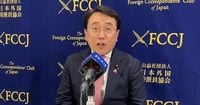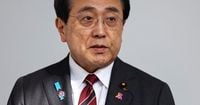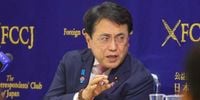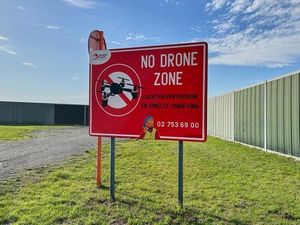Japan’s top trade negotiator, Ryosei Akazawa, stood before a crowd of international journalists in Tokyo on October 1, 2025, ready to defend the controversial tariffs deal struck with the United States. The agreement, which has drawn both praise and criticism across the political spectrum in Japan, sets tariffs on most Japanese exports to the U.S. at 15%—a figure Akazawa insists is comparable to the deal Washington recently reached with the European Union. But there’s more to the story than just numbers and percentages.
At the heart of the deal is Japan’s commitment to invest a staggering $550 billion in U.S. projects, a move Akazawa says will not only strengthen economic ties but also enhance Japan’s own economic security. “The $550 billion investment pledged to the U.S. would be used to enhance Japan’s economic security,” Akazawa reiterated at the Foreign Correspondents’ Club of Japan, as reported by AP and Nikkei Asia. Japan, he emphasized, will maintain control over which projects to fund, signaling a determination to ensure that the investment serves Tokyo’s strategic interests as much as Washington’s.
The path to this agreement was anything but smooth. Akazawa described the early rounds of negotiation with U.S. Commerce Secretary Howard Lutnick and President Donald Trump as “tense.” Trump, never one to shy away from hard bargaining, initially demanded that Japan’s tariff rate jump to a punishing 25%. The Japanese delegation pushed back—again and again. “President Trump was a tough negotiator, but I kept insisting, and he would listen graciously. I have all the respect for him,” Akazawa told reporters, according to AP. “It was a good round of negotiations.” Only after Akazawa’s eighth trip to Washington did the two sides find common ground, settling on the 15% figure by July 2025.
Unlike the EU, Japan was not required to lower its own tariffs on U.S. goods. This, Akazawa pointed out, was a significant achievement. Still, not everyone in Japan is convinced. Critics have mocked Akazawa’s frequent trips to Washington, with some suggesting he “should pitch a tent on the White House lawn” to save taxpayer money. Others argue that, no matter the outcome, “there will always be someone who says Japan lost out.”
The deal’s impact on Japan’s export-dependent economy has already been felt. Exports to the U.S. fell nearly 14% in August 2025 compared to a year earlier, marking the fifth consecutive month of decline. The auto industry, in particular, has been hit hard. U.S. tariffs on Japanese automobiles and auto parts now stand at 15%, a dramatic increase from the original 2.5%. While Japanese automakers manufacture many of their vehicles in North America, the higher tariffs have nonetheless dented shipments and raised concerns about the future competitiveness of Japanese exports.
For Prime Minister Shigeru Ishiba’s administration, the friction over tariffs has added yet another burden. Ishiba is set to be replaced as leader of the ruling Liberal Democratic Party later this week, after the party lost its majority in the lower house and now must seek coalition partners. The timing of the deal—and its political fallout—has only heightened scrutiny of Akazawa’s negotiating strategy and the broader direction of Japanese trade policy.
But Akazawa remains unfazed by the political noise. He brushed off concerns that the U.S. and Japan might interpret the deal differently, emphasizing Japan’s longstanding tradition of honoring international agreements. “Whoever becomes the next prime minister, Japan has an established tradition of respecting agreements, especially those forged with a foreign country,” he said, according to AP.
The $550 billion investment pledge, a pillar of the new trade relationship, has raised its own set of questions. Some observers worry that such a massive outflow of capital could destabilize currency markets or weaken the yen. Akazawa, however, was quick to allay those fears. “Based on our calculation, $550 billion is within the range where there will be no foreign exchange impact,” he stated, as reported by Reuters and Bloomberg. The investment will be funded primarily through loans from a special foreign exchange account managed by Japan’s finance ministry, utilizing assets Japan already holds in U.S. dollars. This structure, Akazawa argued, would “limit impact on the yen currency” and ensure stability in currency markets.
Japan and the United States signed a memorandum of understanding last month outlining the details of the investment package. The funds will flow into key sectors such as semiconductors, metals, pharmaceuticals, energy, and shipbuilding, with investments to be made by January 2029. The package will be delivered through a mix of equity, loans, and loan guarantees, primarily via state-owned agencies like the Japan Bank for International Cooperation (JBIC) and Nippon Export and Investment Insurance (NEXI).
When pressed about the composition of the investment, Akazawa clarified that the equity component is expected to account for just 1–2% of the total, based on past investment track records for JBIC and NEXI. However, he stressed that the actual ratio will be determined by Japan when the time comes to allocate funds. “It’s up to Japan to decide the actual ratio when it starts investing,” he said, making it clear that Tokyo will retain ultimate discretion over how the money is deployed.
Japan’s approach stands in contrast to similar deals being negotiated elsewhere in Asia. In South Korea, for example, concerns over foreign exchange implications have become a major sticking point as Seoul seeks to formalize its own tariff agreement with Washington—one that would see U.S. tariffs on Korean imports fall to 15% from 25% in exchange for $350 billion in Korean investment in the U.S.
The U.S.-Japan deal has also sparked debate about the broader implications of President Trump’s trade policies. Critics of corporate America argue that too many companies—and even foreign governments—have been forced to “bend the knee” to Trump, accepting new oversight and settlements in the face of his aggressive use of presidential powers. Business leaders, for their part, insist that such steps are practical and necessary to navigate the turbulent waters of global trade under Trump’s administration.
For now, Akazawa and his team are focused on implementation. The hope in Tokyo is that the deal will help stabilize Japan’s exports, open new markets for Japanese investment, and reinforce the country’s economic security—all while preserving the delicate balance of the global currency system. Whether the agreement will deliver on those lofty promises remains to be seen, but one thing is certain: Japan’s negotiators have shown they’re willing to go the distance, even if it means making eight trips to Washington and weathering a storm of criticism back home.
As Japan prepares for a change in leadership and the world watches the evolving U.S.-Japan economic relationship, the stakes could hardly be higher. The choices made in Tokyo and Washington over the coming months will shape not just bilateral trade, but the broader dynamics of global commerce for years to come.






